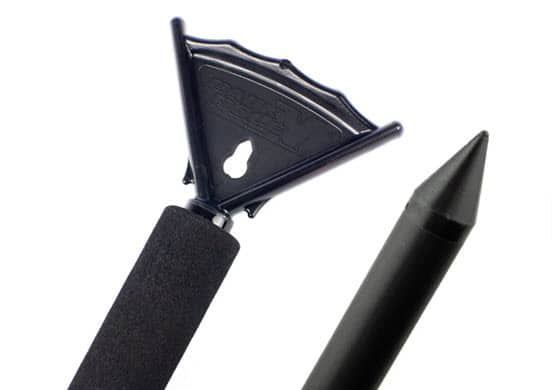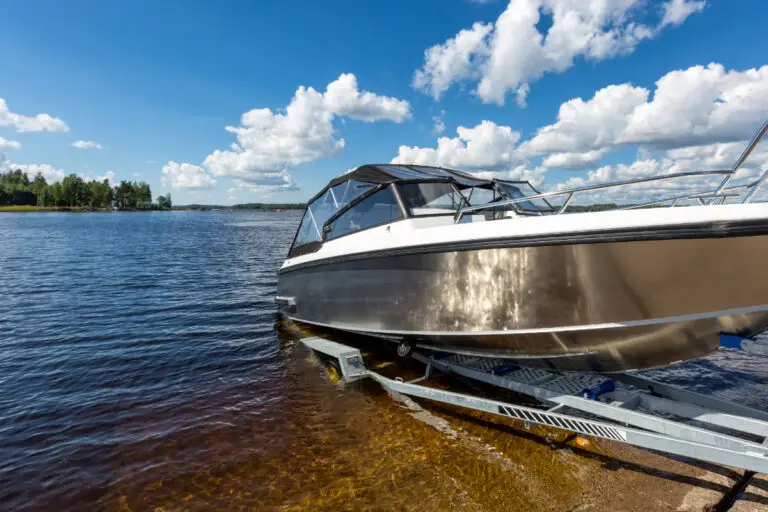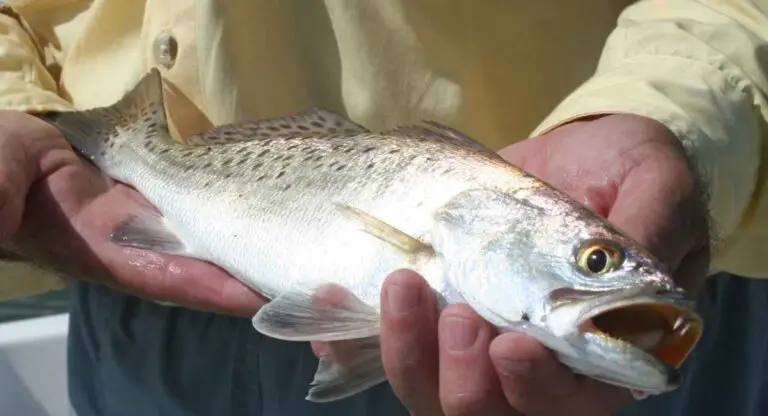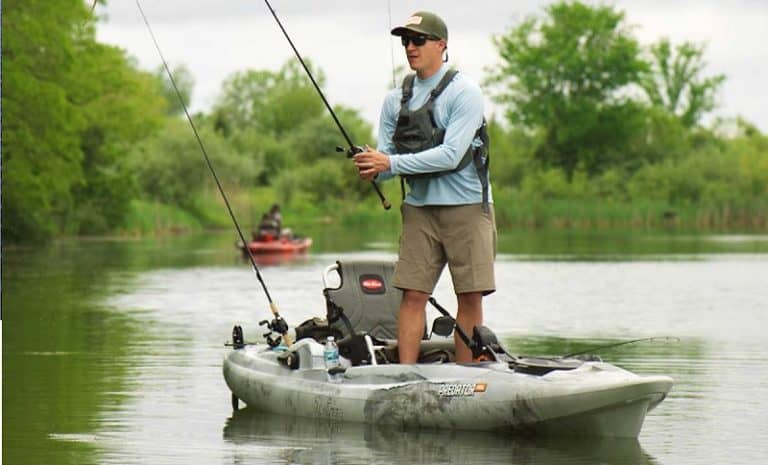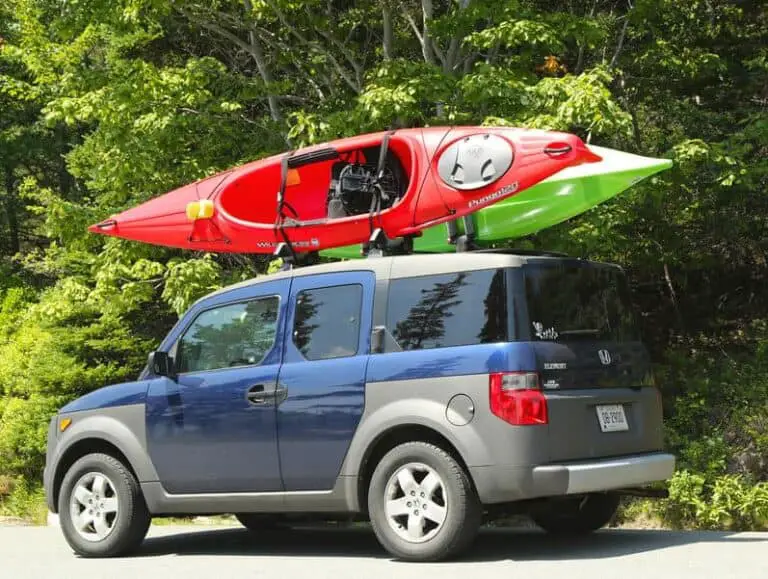Kayak Anchor Poles: How To Use Effectively In All Currents
Anchor poles are a great way to stabilize your kayak in wind or current. This blog post will show you how to use them effectively in all types of conditions. We’ll also share tips on choosing the right anchor pole for your needs. So read on to learn more!
I have experienced firsthand the frustration of having my kayak swept away by a strong tide while fishing in shallow waters.
Find out the average costs and standard conditions for renting a kayak for you or a friend by checking out our latest post. . By anchoring my boat with the anchor pole, I can stay put and reel in more fish – which comes in handy when fishing close to shore.
I compiled a helpful guide that defines what makes a good kayak anchor pole, how to use it while kayak fishing, standard sizes available from vendors, and links that I found helpful.
This guide will show you how to use and fasten a stakeout pole to your boat. You’ll also learn three techniques for mounting a stakeout pole, along with three top videos full of tips on installation and using the anchor trolley with your stakeout pole.
Let’s get started!
What Is A Stakeout Pole?
A kayak anchor pole is a large, firm stake or pin used to anchor in shallow water. They are more effective in calm, slow-moving, shallow waters but can be very effective in fast currents if necessary. For deeper water, drift bags and boat anchors work better.
Kayak stakeout poles are also known as anchor pins, kayak anchor poles, kayak push poles, stick-it anchors, shallow water anchor poles, shallow water anchor pins, a push pole mud foot, or stakeout sticks.
Best Uses For Stakeout Poles
As a shallow water anchor, their primary purpose is to be driven into shallow mud, hard bottoms, or even through an oyster shell or gravel bottom to anchor kayaks, canoes, skiffs, bay boats, flats boats, duck boats, etc.
You can use them as a kayak push pole to move through shallow water, which is ideal when fishing in the marsh.
They are an affordable solution designed to anchor up to a 16′ kayak, canoe, or small boat.
There are many valuable uses for stakeout poles when fishing from a kayak. Here are some of the best ways they can be used:
- To anchor a kayak or boat in shallow water for fishing
- As a push pole to quietly navigate shallow waters
- As a boat hook using the T-handle to pull close to docks or other boats
How To Effectively Use A Kayak Stick It Pole In Strong Tides
As I previously mentioned, winds stronger than 20 mph make it unsafe to be on the water. Before heading out on your next fishing trip, check the barometric pressure, wind speed, and tidal forecast.
This will help you plan better for your trip by letting you know what to expect weather-wise. My favorite app for the iPhone is FishAngler.
Fish are more active and likely to bite when there are strong currents and tides. This is because the fish usually eat before going to deeper waters.
If you want to fish during these conditions, using an anchor trolley with the pole upstream is the safest way to do it. Placing your anchor pole in any other position will cause your kayak to spin out of control in strong currents, which is unsafe.
This gear will allow your boat to waver in the current while still being under control. A trolley on both sides of the kayak will give you more flexibility.
Thread the pole through the trolley ring, ensuring it is firmly secured in the mud. Adjust the position of the trolley ring until it lines up with the current and your stick.
This tactic works for speeds up to 10 mph. If the pole pops out of the mud, try again in a different spot.
If this continues to happen, it is time to go back. Safety is the most important thing, even when fishing for bull reds.
Stakeout Pole Features And Options
Stakeout poles are available in two types:
- Hollow floating pole
- Heavy-duty non-floating solid stakeout pole
Stakeout poles can include:
- A T-bar or push grip handle for pushing down the pole in mud or push poling your kayak
- A lanyard with a braided dock line
- A threaded accessory insert for cameras, flags, and lights
Some vendors have had products on the market for a long time. The YakAttack ParkNPole has a multipurpose handle to push down the pole and doubles as a push pole mud foot for “pole pushing” your kayak through muddy waters.
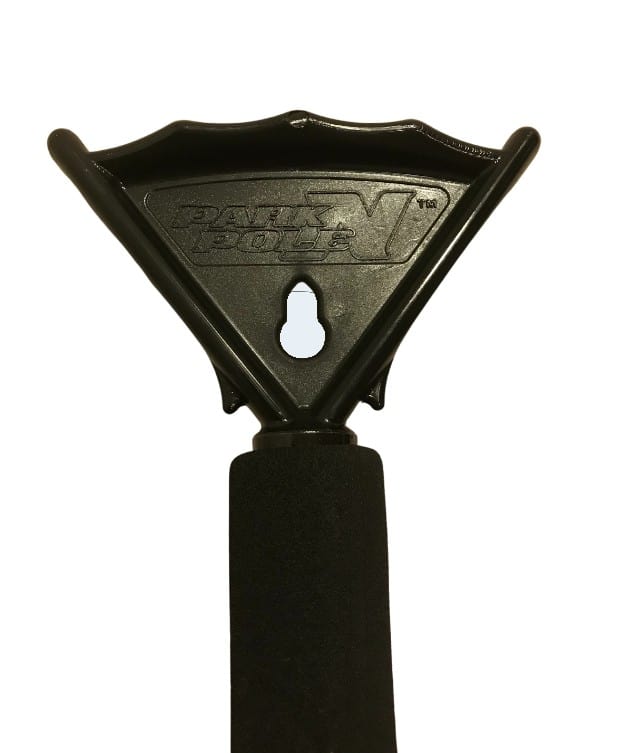
Yak Gear has created the Floating Stake Out Stick out of lightweight and rigid nylon – meaning no extra anchor float leash is necessary!
I found the Salt Strong video on using your anchor pin very helpful. It provides several good tips that I use.
Anchor Pin Tips For Kayak Fishermen from our friends at Salt Strong.
How You Attach An Anchor
There are three methods I found to be the most convenient and reliable.
Method 1: Anchor Trolley
Using an anchor trolley is the most flexible and safest way to go because you’re able to control where the anchor pole connects to your kayak.
First, insert the pole through the ring and secure it into the water bottom. Second, slide the ring to the front bow or rear stern (depending on which direction you want your kayak facing for optimum stability). Lastly, lock off the anchor line to a cleat.
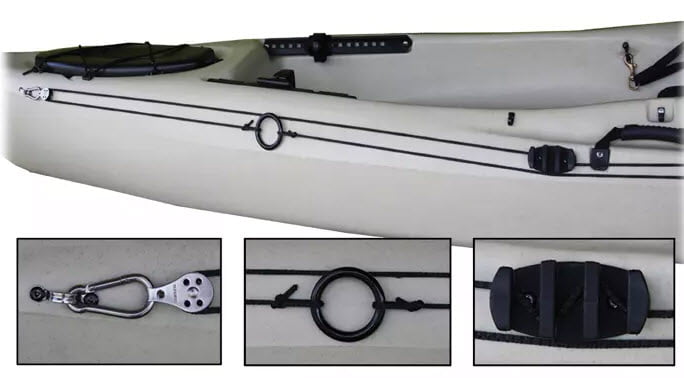
The team at Salt Strong created a great video tutorial on using an anchor trolley and stakeout pole.
Kayak Anchoring: How To Anchor Your Kayak Using A Trolley System
Method 2: Anchor Pole Mounting Bracket
This bracket is an easy and useful way to secure your kayak. It attaches with a bolt on the gunwale or accessory track of the kayak and drives the kayak anchor pole through the bracket, which gives your kayak a secure position.
Although it does not have as much position flexibility as the anchor trolley, it is more straightforward.

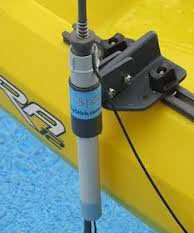
Method 3: Power Pole Micro Anchor System
Several manufacturers sell micro anchor systems that you can operate with remote control. These systems include an anchor pin located in the stern of the kayak that you can raise and lower with the click of a button.
Although it can be thrilling to use, there are several drawbacks to this option. First, the micro anchor will require a costly lithium battery to stay charged between fishing trips. Additionally, since you usually keep them in the stern, the kayak will always be pointing downstream.
The entire setup is quite an investment that most people think is worth it.
The people at Austin Canoe and Kayak have a great video discussing tips on using a Power-Pole Micro Anchor.
Power-Pole Micro Anchor
Note of caution: do not use a stakeout pole, mud stick (or anything else for that matter) in your scuppers. Scupper holes are the weakest part of any kayak and can cause damage to the scupper and cause it to take water into the hull. The potential damage could sink your kayak and void the manufacturer’s warranty.
Note: 3/4″ diameter poles are usually suitable for 22-foot kayaks, boats, and skiffs. 5/8″ diameter poles are designed for vessels less than 17-foot. 7/8″ and 1″ diameter poles are suitable for typical vessels up to 27-foot.
Keeping Pole From Scraping The Kayak
Be aware that when you pin the pole too close to the hull, it can tend to scrap the side when the wind or water current is fast. This situation can also happen when the wind or kayak changes directions quickly and the pole and kayak rub.
This scrape is only superficial in most cases but will look bad if you resell your kayak.
It would be best also to consider where to store your anchor pole when you have kayak pedals in the cockpit. Read here about using a fishing pedal kayak.
Here are some simple solutions depending on which kayak attaching method you are using.
- For method 1: Anchor Trolley System, tether to the trolley ring with a 6′ leash. This step will avoid any friction with the kayak.
- For method 2: Stakeout Pole Mounting Bracket – you should not have any issues since you secure it away from the hull.
- For method 3: Power-Pole Micro Anchor System – you should not have any problems since you install it away from the stern
How To Mount An Anchor Pin To A Kayak
There are a couple of options for an anchor pin kayak mount:
- YakAttack Deluxe ParkNPole Clip Kit with Anti-Pivot Mounting Base and Security Straps are Rubber clips.
- YakAttack RotoGrip Paddle Holder
- RAILBLAZA G-hold 35MM that installs in any RAILBLAZA StarPort.
- Install any 1″ pipe holder on the gunwale
The above options vary from bolt-on to accessory track gadgets. You will need to make sure the diameter of the kayak stake out pole you use matches the grip size of the holder above. Consider the installation location, how the stick will be attached and removed while on the water.
Kayak Anchor Poles – Why Use Them?
When kayak fishing in the marshes, I was reeling in a big redfish. And the currents took my Hobie Pro Angler and shot me through rows and rows of marshy brush and spilled me into a large retention pond a considerable distance from my starting location.
I bought my first stakeout pole the next day. I’ll never enter the marshes again without one. It took me two hours of vigorous pedaling to get out before dark (I should have had LED lights on my kayak as well).
Sight fishing can be difficult if your kayak drifts. Even slowly. Later in the day, when the high tide comes in and the currents are more substantial, you need a way to be stable and stationary yet nimble enough to move to chase fish. Grapnel anchors and drift socks work well in deeper water but are less effective in the shallow water I like to fish.
Summary
Anchor poles can be a huge help when fishing in strong currents and are an essential piece of gear for kayak anglers. This article has helped you understand how to use them effectively.
If you have any questions or experiences, please leave them in the comments below! I’m excited to hear about your adventures with anchor poles.

